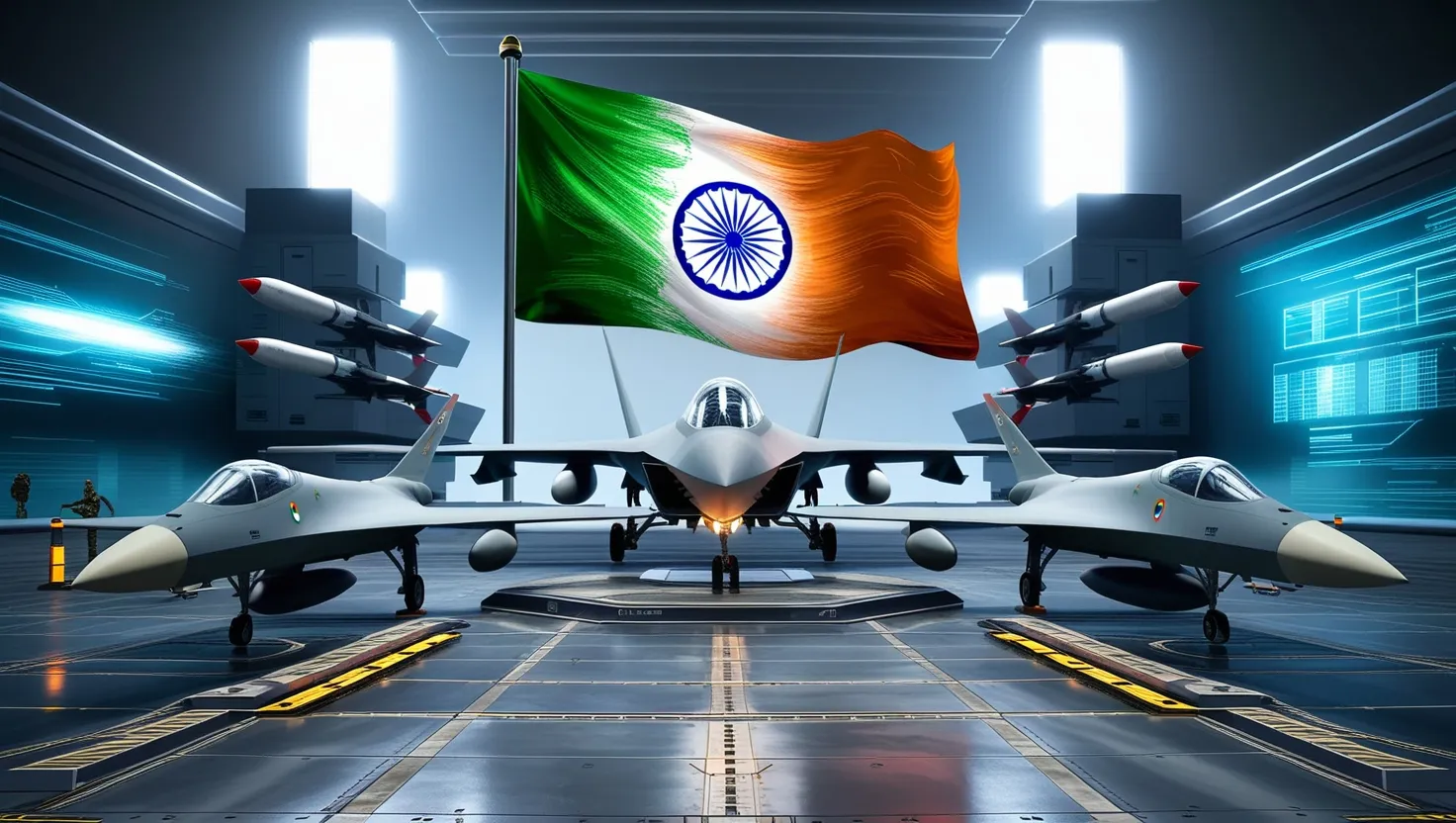As we step into 2025, India is poised on the cusp of a significant transformation in its military landscape. The Defence Ministry has declared this year as the “Year of Reforms,” and the agenda is nothing short of ambitious. Let’s delve into the five key defense initiatives that are set to modernize India’s military, making it a technologically advanced and combat-ready force.
Atmanirbhar Bharat: The Push for Indigenous Defense Production
The concept of “Atmanirbhar Bharat” or a self-reliant India is not new, but its application in the defense sector is a game-changer. The government’s emphasis on indigenous defense production is aimed at reducing dependence on foreign imports and fostering a robust domestic industry. This initiative is more than just a policy; it’s a strategic move to ensure that India’s defense needs are met by its own capabilities.
As Defence Minister Rajnath Singh aptly put it, “The ‘Year of Reforms’ will be a momentous step in the modernisation journey of the armed forces.” This push for self-reliance is expected to boost the economy, create jobs, and most importantly, enhance national security by ensuring that critical defense technologies are developed and manufactured within India.
Theatre Command Restructuring: A New Era of Inter-Service Coordination
Imagine a scenario where the Army, Navy, and Air Force operate not as separate entities but as a cohesive unit, each contributing their unique strengths to achieve a common goal. This is the vision behind the theatre command restructuring. Under this model, each theatre command will comprise units from all three services, working in tandem to address security challenges in specified geographical territories.
This integration is not just about operational efficiency; it’s about breaking the silos that have historically hindered joint operations. By working as a single entity, the armed forces can respond more effectively to emerging security challenges. As General James Mattis once said, “Be polite, be professional, but have a plan to kill everybody you meet.” In this context, the plan is to kill inefficiencies and enhance synergy.
The Agnipath Scheme: A New Recruitment Paradigm
The Agnipath scheme, though controversial, marks a significant shift in military recruitment. Designed to attract younger talent and reduce the average age of the military, this scheme introduces a four-year tenure for new recruits, with an option to extend their service. The idea is to create a more agile and dynamic force, capable of adapting quickly to modern warfare.
But what does this mean for the veterans? The scheme has raised questions about the future of those who serve for just four years. Will they be adequately prepared for civilian life? The government’s plan to leverage veterans’ expertise in ongoing reforms and innovation is a step in the right direction, but it remains to be seen how this will play out in practice.
Advanced Weapons Systems: The Rafale Jets and S-400 Missiles
The acquisition of advanced weapons systems like the Rafale jets and S-400 missiles is a clear indication of India’s commitment to modernizing its military. These systems are not just about adding firepower; they represent a leap in technological capabilities. The Rafale jets, with their advanced avionics and multi-role capabilities, and the S-400 missiles, with their robust air defense systems, are set to significantly enhance India’s air power and defense capabilities.
As Sun Tzu said, “The supreme art of war is to subdue the enemy without fighting.” While this might be an ideal, having advanced weapons systems certainly gives India an edge in deterrence and defense.
Cyber Warfare Capabilities and Digital Defense Strategies
In the 21st century, warfare is no longer confined to traditional battlefields. Cyber and space domains have become critical frontiers, and India is not lagging behind. The focus on emerging technologies like artificial intelligence, machine learning, hypersonics, and robotics is aimed at developing new tactics and procedures for future wars.
Cyber warfare capabilities are being bolstered to protect India’s digital infrastructure and to launch offensive operations when necessary. This is a complex and ever-evolving field, but one that holds immense potential for modern militaries. As Admiral Michael Rogers, former Director of the National Security Agency, noted, “Cyber is a domain that is here to stay, and it is a domain that we need to be prepared to operate in.”
Strategic Implications and Economic Benefits
These initiatives are not just about military modernization; they have significant strategic and economic implications. By enhancing indigenous defense production, India is reducing its reliance on foreign imports, which can be volatile and unpredictable. This self-reliance also translates into economic benefits, as domestic industries grow and create jobs.
The theatre command restructuring and the Agnipath scheme are designed to make the military more agile and responsive to modern security challenges. Advanced weapons systems and cyber warfare capabilities ensure that India remains a formidable force in the region.
Potential Hurdles in Implementation
While the vision is clear, the path ahead is not without its challenges. Implementing these reforms will require significant resources and a coordinated effort across various stakeholders. The integration of theatre commands, for instance, will need careful planning to ensure seamless coordination between the services.
The Agnipath scheme, despite its potential benefits, faces resistance from some quarters, and its success will depend on how well it is executed and received by the recruits and the broader public. The acquisition of advanced weapons systems is costly and requires long-term commitments.
A Shared Understanding and Joint Operational Capabilities
One of the key takeaways from these reforms is the emphasis on inter-service cooperation and joint operational capabilities. This is not just about working together; it’s about developing a shared understanding of operational requirements and training together to achieve common goals.
As General Colin Powell once said, “Perpetual optimism is a force multiplier.” The optimism here is palpable, but it needs to be backed by concrete actions and a commitment to see these reforms through.
Conclusion
As India embarks on this journey of defense reforms, it is clear that the path ahead will be challenging but rewarding. These initiatives are not just about modernizing the military; they are about ensuring India’s security and sovereignty in a rapidly changing world.
The question now is, will these reforms achieve their intended goals? Only time will tell, but one thing is certain: India is taking bold steps towards a more technologically advanced and combat-ready military. As the ancient Chinese strategist Sun Tzu said, “Victorious warriors win first and then go to war, while defeated warriors go to war first and then seek to win.” India is certainly preparing to win.





